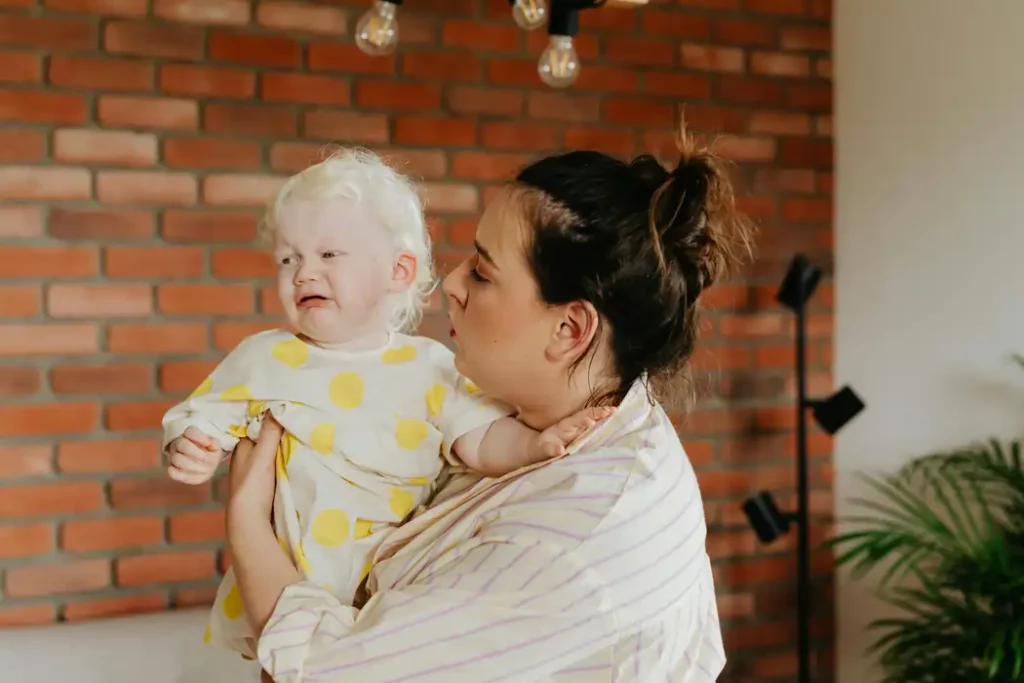As a new mother, the world suddenly becomes a landscape of potential risks and dangers, especially when it comes to your precious little one. Respiratory syncytial virus (RSV) is one such concern that often looms large during the winter months. Understanding what RSV is, how it affects infants, and what steps you can take to protect your baby is crucial for navigating through this season safely.
Understanding RSV
Respiratory Syncytial Virus (RSV) is a highly contagious pathogen that primarily targets the respiratory system, especially in infants and young children. It manifests in a spectrum of respiratory illnesses, from mild cold symptoms to severe conditions like bronchiolitis and pneumonia. For new mothers, the threat of RSV is particularly daunting due to its preference for infants with underdeveloped immune defenses and delicate airways, making them especially prone to serious complications.
Identifying RSV Symptoms
Recognizing the array of symptoms associated with RSV is paramount for early detection and prompt medical intervention. Infants infected with RSV may exhibit a range of manifestations, including coughing, wheezing, fever, nasal congestion, decreased appetite, irritability, or lethargy. Of utmost concern are signs of respiratory distress, such as rapid or labored breathing, necessitating immediate medical attention to mitigate the risk of exacerbation.
Timing of RSV Season
The seasonal prevalence of RSV typically spans the autumn, winter, and early spring months across many geographical regions, with its zenith occurring between November and March in temperate climates. This temporal pattern aligns with colder weather conditions when individuals tend to congregate indoors, thereby heightening the likelihood of RSV transmission through close contact and contaminated surfaces.
Risk Factors for Infants
Several predisposing factors amplify the susceptibility of infants to severe RSV infections, including premature birth, underlying health issues (such as congenital heart disease or chronic lung ailments), and compromised immune function. Infants under six weeks old are especially vulnerable due to their nascent capacity to generate antibodies, rendering them more susceptible to the virulence of RSV and its associated complications.
Preventive Measures for New Mothers
Empowering new mothers with practical preventive strategies can substantially diminish the risk of RSV transmission to their infants. Emphasizing stringent hand hygiene practices, including frequent handwashing with soap and water, particularly before handling the baby or preparing nourishment, serves as a frontline defense against RSV. Implementing measures to curtail exposure to crowded environments, especially during the peak RSV season, can curtail the transmission chain. Sustaining a hygienic living environment by routinely disinfecting frequently touched surfaces and laundering bedding and clothing reinforces the barrier against RSV dissemination. For breastfeeding mothers, leveraging the immune-boosting properties of breast milk can confer additional protection against RSV infection. Additionally, mitigating exposure to secondhand smoke and remaining vigilant to seasonal variations can further fortify the shield safeguarding the infant’s health.
Seeking Medical Care
In the event of suspected RSV infection or the manifestation of respiratory distress symptoms, expedient medical attention is imperative. Promptly engaging the services of the infant’s pediatrician for evaluation and guidance is pivotal. Severe cases of RSV may necessitate hospitalization to administer supportive therapies, including supplemental oxygen and intravenous fluids. Treatment modalities are primarily focused on symptom management and ensuring optimal hydration and oxygen saturation levels, all under the vigilant oversight of healthcare professionals at a health clinic.
Educating Family and Caregivers
Empowering family members and caregivers with knowledge about RSV and preventive measures is essential for creating a protective cocoon around the newborn. Educating them about the signs and symptoms of RSV, as well as the importance of hand hygiene and minimizing exposure to crowded places, can bolster efforts to safeguard the infant’s health. Encouraging open communication and collaboration ensures that everyone involved in the baby’s care is equipped to uphold a safe and healthy environment, thereby enhancing collective efforts in RSV prevention.
Conclusion
Traversing through RSV season as a new mother may seem formidable, yet armed with knowledge and proactive measures, one can effectively shield their infant from this prevalent respiratory menace. By acquainting oneself with the nuances of RSV pathology, enacting preventative protocols, and promptly seeking medical intervention when warranted, new mothers can mitigate the risk of adverse outcomes and safeguard the health and well-being of their cherished offspring. Remember, the journey is not solitary—trusted healthcare providers stand ready to offer unwavering support and guidance throughout the RSV season and beyond.
Also read –
- 10 Myths Debunked About Natural Pain Relief
- Five Habits That Are Changing Your Hormones Right Now
- Ensuring Safety and Efficacy: The Critical Functions of Licensed Medical Cannabis Dispensaries
- Artificial Intelligence: Transforming Patient Care and Research
- DIY Herbal Apothecary: Preparing Natural Remedies at Home



